

|
Recent Adventures |
|
. Our adventure began in May 2003 when our friend and fellow photographer, Steve Vaughan, invited us to a presentation at Bear Creek Nature Center in Colorado Springs. Steve and his family had just returned from a vacation to Costa Rica, and Steve was giving a slide presentation of the trip. His sons, Dillon and Connor, chimed in with their favorite memories--tasting a mango for the first time at a roadside stand, bending over so the delicious juice running down their chins didn’t get all over their shirts; seeing the howler monkeys by the pool at the hotel and being awakened at 4 a.m. by their spine-tingling howls; watching a “Jesus Christ” (Basilisk) lizard run across the water; exploring the Vampire Bat cave; and catching bats in a mist net. |
Costa Rica Adventure |

The Adventure BeginsSaturday, April 3, 2004, our trip begins in earnest. We arrive at the airport early just in case we run into problems getting all of our equipment through security, but we sail through with no problems. It’s great not to worry about hand-checking film, and our digital cameras and computer equipment made it through the x-ray with no problems. Our first surprise comes when we see our plane parked at the gate. It’s a small commuter jet, which means my Phototrekker probably won’t fit in the overhead. (Lesson learned—check the size of your plane when booking flights.) I’m carrying many thousands of dollars worth of camera equipment and worry about subjecting it to the rough handling of gate-checked luggage. The gate attendant tells me I will have to gate-check my Phototrekker, but I politely explain that it contains camera equipment and ask if I can try to fit the bag in the overhead before we decide to gate-check. To my dismay, the bag won’t fit in the overhead, but luckily the pair of seats in front of us was designed without a center support, so the bag fits sideways under the seat. Yeah! My camera equipment will be safely in my sight for the entire journey. Rebecca’s Mountainsmith fits in the overhead with no problem; glad we are traveling together as she kindly gives up her foot room for the Phototrekker. |
|
After the slide presentation, we helped Steve carry his equipment to his car. A casual question from Steve planted a seed that eventually grew into our next adventure. Would we like to join him on a “photographers only” tour of Costa Rica next spring? Soon after, Steve invited us over for a barbeque, and the conversation inevitably turned towards his upcoming adventure. He had arranged for a guide, a dedicated driver and bus, and was in the process of finalizing the itinerary for the trip. As Steve described each location and asked which ones we would like to photograph the most, our desire to visit this fascinating country grew even stronger. By the end of the day, we were fully committed to joining him. Steve recommended we schedule the trip for the first two weeks in April, since that would be the end of the dry season and our best opportunity to catch the end of migrations for some species and the beginning of nesting season for others.
|
|
Costa Rica—Photographer’s Paradise Article and photography By Keith and Rebecca Snell
|
|
Buried in with the other pictures from the trip was Steve’s one slightly blurry picture (sorry Steve) of an endangered Resplendent Quetzal high in the canopy. Steve apologized that he didn’t have more pictures, but his wife Michelle had laid down the law before the trip. This was to be a family vacation, NOT a photography trip. Their stories and enthusiasm infected everyone in the room with a desire to visit this wonderful country. |
|
Over the next nine months our anticipation grew as we continued planning for the trip. Rebecca needed a new tele-converter for her 70-200 VR lens and Better Beamer flash extender to help with fill flash for those birds high in the canopy. The trip also provided the much-needed incentive to move files off our notebook computer to make room to download our digital files during the trip. We freed up 25 Gig on our hard drive. That, and the 40 Gig portable hard drive in our “Tripper” should provide enough room for 18 days worth of images, shouldn’t it? I debated whether to bring my 500mm f4 lens (Steve settled that question with a very affirmative “yes”), and I used the trip as an excuse to finally purchase the Kodak SLR/n that I had been eyeing.
|
|
I started packing for the trip about a week before we were scheduled to leave, which gave me plenty of time to pack and repack my camera gear and associated equipment. My Lowepro Phototrecker AW would just barely accommodate the 500mm AFS with Nikon D100 attached, and was just under the largest legal carryon size. Rebecca found a Mountainsmith Office B.C. lumbar pack that was perfect for her D100 with 70-200 plus 1.4x teleconverter attached. We split our tripods and heads between our checked luggage, just in case one of our bags was lost. |
|
Howler Monkey, Tortugero National Park, Costa Rica |
|
Basilisk Lizard Tortugero National Park, Costa Rica |
|
Tiger Heron, Tortugero National Park, Costa Rica |
|
Banana Blossom Tortugero National Park, Costa Rica |
|
Steve meets us in the airport in San José and introduces us to our guide, Paulo Valerio. Steve had raved about what a great guide Paulo was, and over the next two weeks he would exceeded all of our expectations. We’re up bright and early the next morning, Paulo introduces us to our driver Jose, and the six photographers and guide pile our gear into our 20-person Toyota Cruiser bus and we are on our way. It isn’t long before we learn what an important part of the team Jose will be. In addition to being a fantastic driver, he is also a very skilled wildlife spotter. We’re on the road for only a short while when Jose suddenly stops the bus, and Paulo’s exclamation of “holy sugar” alerts us there is something exciting to see. |
|
Jose has spotted a three-toed sloth feeding in the canopy. We all take our “safety shots” from the window of the bus, and then grab our tripods and long lenses to snap a few shots from the side of the road before the sloth disappears. Paulo points out the algae growing on the sloth’s fur, and describes the fascinating symbiotic relationship between the sloth and algae. The algae provide cryptic coloration for its host to help hide it from predators, and even changes color during the dry season to match the colors in the forest canopy. He goes on to explain the complex relationships between the sloth and many other organisms, including the moths that live in its fur. The moths lay their eggs in the sloth’s dung when he descends to the forest floor to defecate once a week. The moth larvae feed on the dung until they pupate, and then catch a ride up into the canopy on the sloth the next time he descends. Several species of moths and dung beetles live on the sloth, and can number in the thousands. Rebecca decided the sloth would not make a good house pet. |
|
Three Toed Sloth Outside Baru National Park, Costa Rica |
|
After a winding ride through the mountains, a bumpy road through miles of banana plantations, and several more photo ops along the way, we arrive at the Pacuare river where we meet up with Sergio, who will be our boat captain for the trip to Tortuguero and our explorations throughout the delta over the next three days. Sergio has almost a sixth sense for finding birds and other wildlife along the river delta and canals, and amazes us with his ability to maneuver the boat to get us in close for the shot without spooking our quarry.
|
|
Tortuguero is a model of an eco-tourism based economy. Paulo explains how the locals, who in the past had been prone to poaching in order to support their families, have been given exclusive rights to be guides for the eco-tour business. The guides and their families are much better off, and poaching is now all but non-existent in Tortuguero National Park. |
|
Orb Weavers and Egrets We have time in the afternoon to do some exploring on our own, and soon learn why Paulo warned us to carry our tripods in front of us on the trails. Yellow Orb Weaver spiders are prone to build their webs (which are renowned for the strength of their fibers) across the trails, and the spiders have a very painful bite. I soon experience how tough those fibers are when I walk through the remnants of an old web. (Rebecca makes me smile several times on the trip with her involuntary little “dance of the spider willies.”) |
|
The next morning we all meet at the boat at 5:30 a.m. to begin our exploration of the river and canals. This is the first real introduction for Rebecca and me to the fascinating world of shorebirds. With tutoring from Steve and Paulo, we soon learn to differentiate between Great Egrets (black legs and feet) Snowy Egrets (yellow feet) and “little blues” (herons which we confused with the egrets at first). We spend the next two days exploring the river and tributaries and photographing many species of egrets, heron, kingfishers, and grebes, as well as a nesting pair of Slaty-tailed Trogons, osprey, caiman, basilisk lizards, geckos, and spider and howler monkeys, to name a few. |
|
I learn that one should never set up your photography equipment under a tree full of howler monkeys. They are not afraid of humans, and seem to delight in urinating on anyone or anything below them. Luckily the howler misses my open camera pack by a foot or so. Steve had warned us the howlers would wake us up every morning at 4 a.m., but they are kind enough to wait until 5 a.m. on the mornings we are there. We planned three days at each shooting location, which turned out to be a perfect length of time to get familiar with the area and increased our chances of getting the shots we wanted. Our three days at Tortuguero fly by, and it’s soon time to move on. |
|
Boat-Billed Heron Tortugero National Park, Costa Rica |
|
Northern Jacana Tortugero National Park, Costa Rica |
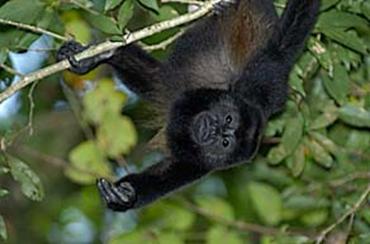
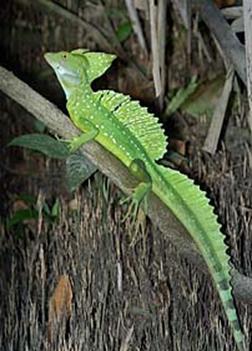
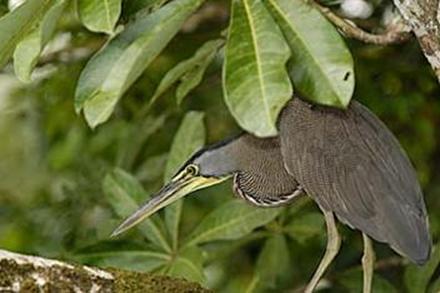
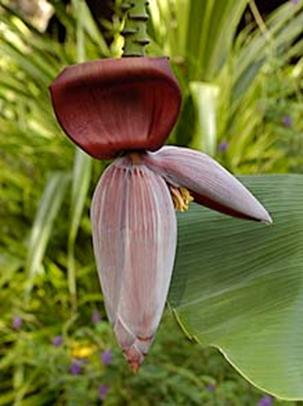
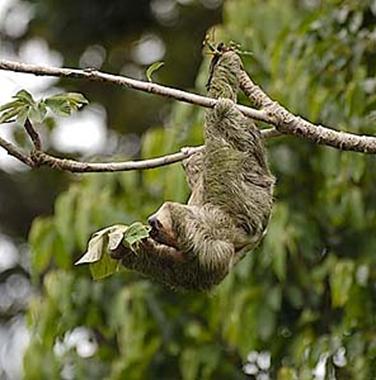
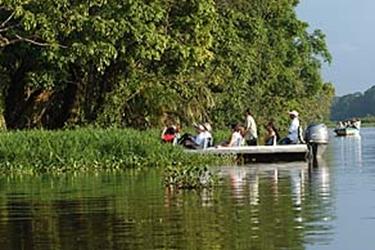
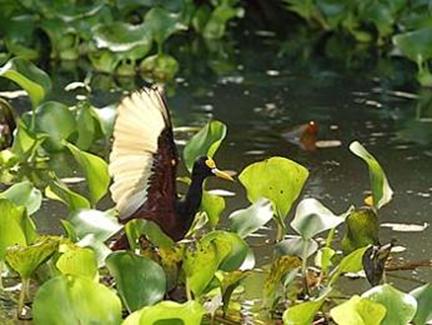
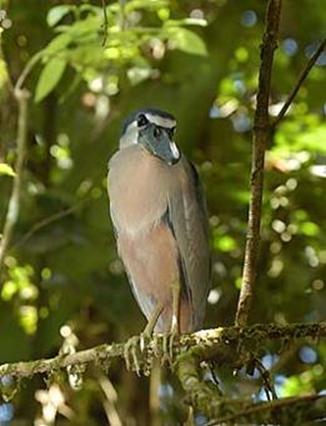
|
Spirit of Photography Keith and Rebecca Snell |